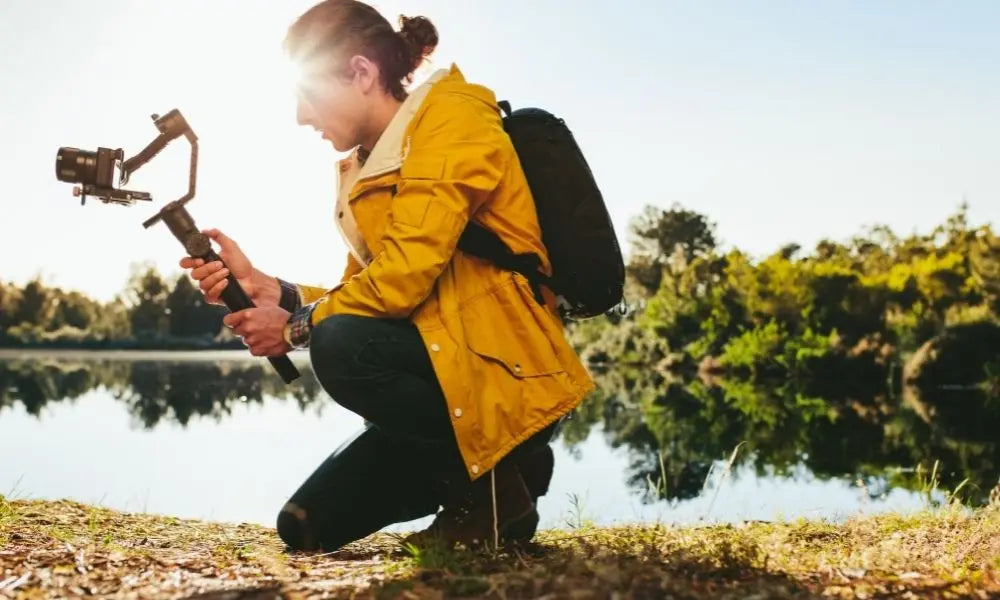Since the dawn of filmmaking, budding camera operators have searched for ways to stabilize their cameras. This was quite difficult with bulky, old-fashioned cameras—but as those cameras got smaller, they grew easier to stabilize. With a more maneuverable camera, you’ve got a whole range of stabilizing equipment to choose from. Let’s look at a brief history of the DSLR camera gimbal, one of the most crucial tools for filmmaking success.
Stabilizers of Yore
What came before the gimbal?
In 1910, it was the Aeroscope, a handheld camera that allowed the operator to film up to 10 minutes of footage without having to turn a crank. Throughout the ensuing decades, operators also relied on tripods and dollies to keep their cameras still.
Then in 1975, it was the Steadicam, which evolved into the stabilizer vests we know today.
People have used gimbals for many different purposes throughout the centuries, for everything from inkwells in ancient Greece to gyroscopes on ships. When did they first connect with the camera?
Updates in Technology
In 2013, Movi created a gimbal that worked with a camera. In the past, people had used them to stabilize helicopter mounts and equipment on ships. The cameras just had to get small enough to work with a gimbal!
The growing popularity of handy DSLR cameras—which weigh less than 10 pounds—created the perfect opportunity to add gimbal technology. It works by measuring the camera’s position dozens (or hundreds) of times a second and correcting any extraneous motion. Now, DSLR camera gimbals are commonplace tools in a filmmaker’s collection.
A Stable Future
DSLR gimbals are here to stay, and they work well with multiple other pieces of equipment. Steadicam technology has its advantages because it relies on the operator’s inertia, but gimbals can stabilize on multiple axes. Add a gimbal to a vest, and you’ve got superior stability and silky-smooth motion shots.
The future of filmmaking isn’t a “one or the other” situation. These days, filmmakers are using multiple types of stabilization at once! Add a gimbal to your collection of equipment, and you’ll see the results in action next time you watch your dailies.
When planning your next movie-making venture, it’s useful to know a brief history of the DSLR camera gimbal as you shop for equipment. Gimbal technology can make or break your action scenes and quick shots.
